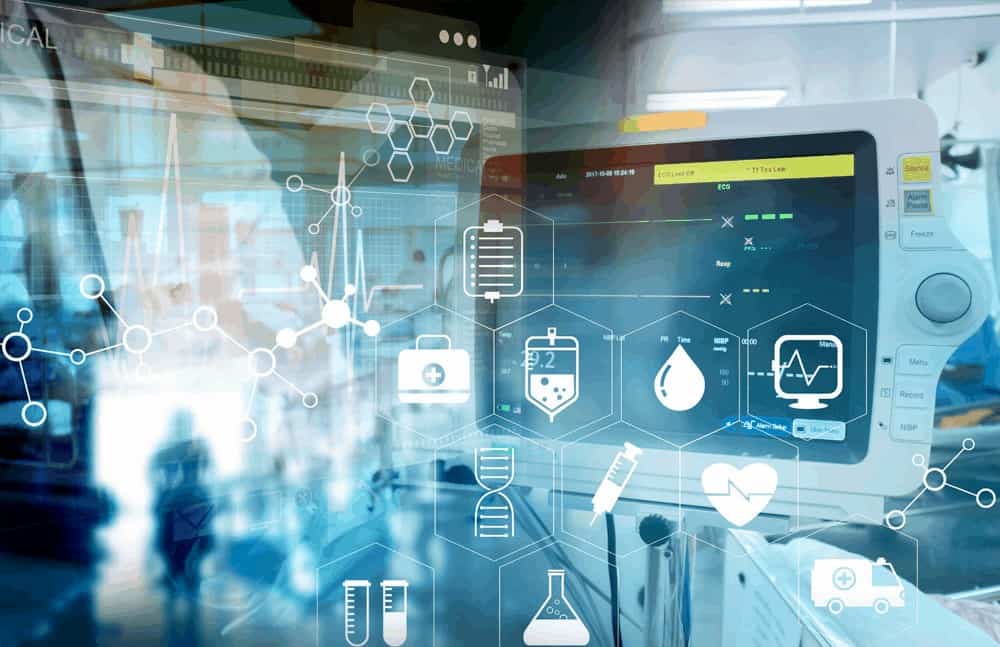
In today’s rapidly advancing technological landscape, the sales and distribution of medical equipment are undergoing a profound transformation. Emerging technologies are revolutionizing traditional distribution channels, offering unprecedented efficiency, accessibility, and reliability. From telemedicine to blockchain solutions, these innovations are reshaping how medical equipment reaches healthcare providers and patients worldwide.
Are there emerging technologies that impact the sales and distribution of medical equipment?
Emerging technologies are significantly impacting the sales and distribution of medical equipment. Let’s delve into the transformative trends revolutionizing the healthcare industry’s supply chain.
Telemedicine: Redefining Access to Medical Equipment
Telemedicine has emerged as a game-changer in the healthcare industry, especially in remote or underserved areas. This technology enables healthcare providers to diagnose, treat, and monitor patients remotely, reducing the need for physical visits to medical facilities. With telemedicine platforms, patients can access medical consultations and even receive prescriptions without leaving their homes. Consequently, the demand for portable medical devices and equipment has surged, driving manufacturers to develop innovative, user-friendly solutions tailored for telehealth applications.
Telemedicine not only enhances patient care but also streamlines the distribution process. By leveraging digital platforms, medical equipment suppliers can reach a broader audience, including rural clinics, nursing homes, and home healthcare providers. Moreover, telemedicine facilitates real-time monitoring of equipment usage and performance, enabling proactive maintenance and support services.
Artificial Intelligence: Optimizing Supply Chain Management
Artificial intelligence (AI) is revolutionizing supply chain management in the healthcare sector, offering predictive analytics, demand forecasting, and inventory optimization capabilities. AI-powered algorithms analyze vast amounts of data to identify consumption patterns, anticipate equipment demand fluctuations, and optimize inventory levels. This proactive approach minimizes stockouts, reduces excess inventory, and enhances overall supply chain efficiency.
Additionally, AI-driven predictive maintenance ensures the continuous functionality of medical equipment, preventing costly downtime and service disruptions. By harnessing machine learning algorithms, healthcare organizations can identify potential equipment failures before they occur, enabling timely interventions and maintenance activities.
Blockchain Technology: Enhancing Transparency and Traceability
Blockchain technology holds immense potential for transforming the sales and distribution of medical equipment by enhancing transparency, traceability, and security throughout the supply chain. By leveraging decentralized ledgers, blockchain enables stakeholders to track the journey of medical devices from manufacturing facilities to end-users seamlessly. This immutable record ensures product authenticity, reduces the risk of counterfeiting, and enhances regulatory compliance.
Moreover, blockchain facilitates smart contracts, automating contract execution and payment processes between suppliers, distributors, and healthcare facilities. This streamlined approach reduces administrative overheads, minimizes transaction costs, and accelerates order processing, benefiting all parties involved in the supply chain.
Internet of Medical Things (IoMT): Connecting Devices for Seamless Integration
The Internet of Medical Things (IoMT) encompasses interconnected medical devices and equipment that collect, analyze, and transmit health data in real-time. This interconnected ecosystem enables seamless integration and interoperability among various medical devices, streamlining data exchange and decision-making processes. IoMT solutions enhance remote monitoring, diagnostics, and treatment, empowering healthcare providers to deliver personalized care efficiently.
IoMT-enabled medical equipment offers unparalleled connectivity and interoperability, facilitating remote diagnostics, predictive maintenance, and performance optimization. By leveraging cloud-based platforms and advanced analytics, healthcare organizations can harness the full potential of IoMT to improve patient outcomes and operational efficiency.
3D Printing: Revolutionizing Manufacturing and Customization
3D printing technology is revolutionizing the manufacturing of medical equipment, enabling rapid prototyping, customization, and on-demand production. With 3D printing, manufacturers can create complex medical devices and components with precision and efficiency, eliminating the need for traditional manufacturing processes. This flexibility allows for the creation of customized prosthetics, implants, and surgical instruments tailored to individual patient needs.
Furthermore, 3D printing reduces lead times, lowers production costs, and minimizes material waste, making it a sustainable and cost-effective manufacturing solution. By embracing additive manufacturing technologies, medical equipment suppliers can accelerate innovation, enhance product quality, and meet evolving market demands effectively.
Robotics and Automation: Streamlining Operations and Logistics
Robotics and automation play a pivotal role in streamlining operations and logistics within the healthcare supply chain. Automated guided vehicles (AGVs), robotic arms, and warehouse automation systems optimize inventory management, order picking, and distribution processes. These robotic solutions enhance operational efficiency, reduce manual errors, and mitigate labor shortages in warehouse and logistics operations.
Moreover, robotic-assisted surgeries and medical procedures are becoming increasingly prevalent, offering precision, control, and reproducibility. Robotic systems empower surgeons to perform complex procedures with enhanced dexterity and accuracy, minimizing patient risk and recovery time. As robotics technology continues to evolve, its integration into medical equipment sales and distribution processes will drive further innovation and efficiency gains.
Conclusion
In conclusion, emerging technologies are profoundly impacting the sales and distribution of medical equipment, revolutionizing traditional supply chain processes. From telemedicine and artificial intelligence to blockchain and robotics, these innovations are reshaping how medical devices reach healthcare providers and patients worldwide. By embracing these transformative trends, stakeholders across the healthcare industry can enhance efficiency, accessibility, and patient care, ushering in a new era of innovation and progress.
FAQs
How do emerging technologies improve supply chain management in the healthcare industry?
Emerging technologies such as AI, blockchain, and IoT enhance supply chain management by offering predictive analytics, transparency, and real-time monitoring capabilities. These technologies optimize inventory levels, reduce costs, and improve operational efficiency.
What role does telemedicine play in the distribution of medical equipment?
Telemedicine enables remote consultations, diagnostics, and prescriptions, driving the demand for portable medical devices and equipment. By leveraging digital platforms, suppliers can reach a broader audience and streamline distribution processes.
Are there any challenges associated with adopting emerging technologies in medical equipment sales?
While emerging technologies offer significant benefits, their adoption may pose challenges related to cost, integration, and regulatory compliance. Stakeholders must address these challenges through strategic planning, collaboration, and investment in technology infrastructure.
How does 3D printing revolutionize the manufacturing of medical equipment?
3D printing technology enables rapid prototyping, customization, and on-demand production of medical devices and components. This flexibility allows for the creation of personalized implants, prosthetics, and surgical instruments tailored to individual patient needs.
What impact do robotics and automation have on logistics and operations in the healthcare supply chain?
Robotics and automation streamline inventory management, order fulfillment, and logistics operations in the healthcare supply chain. Automated systems enhance efficiency, accuracy, and scalability, mitigating manual errors and labor shortages.
How does blockchain technology enhance transparency and traceability in medical equipment distribution?
Blockchain technology provides a decentralized, immutable ledger for tracking the journey of medical devices from manufacturers to end-users. This transparent record enhances product authenticity, reduces counterfeiting risks, and ensures regulatory compliance.




